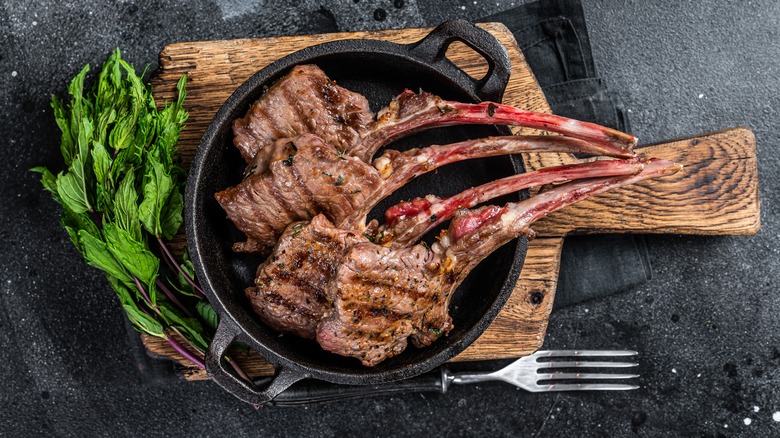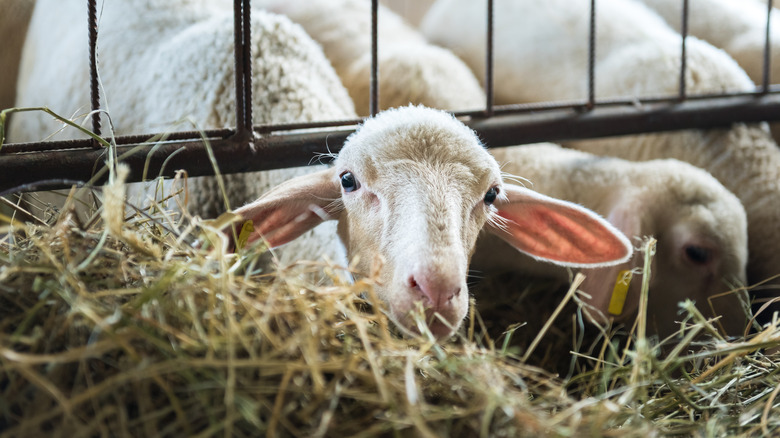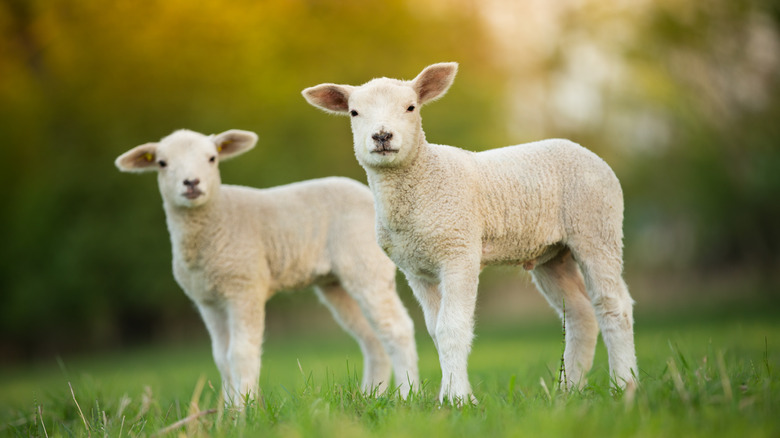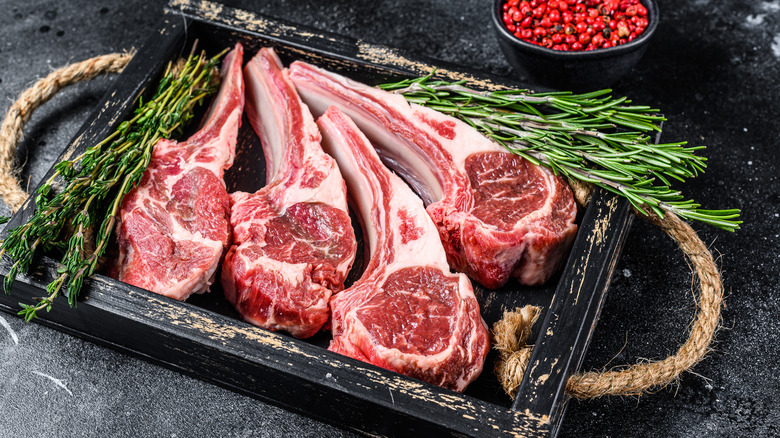Is There A Difference Between American And New Zealand Lamb?
Lamb tends to be a pretty polarizing protein option for the plate. "Gamey" is what typically comes to mind, and many do not enjoy the distinct flavor often associated with the word.
There is not much of a demand for lamb in the United States, with it comprising less than 1% of all meat consumed, per The Culinary Pro. Texas, California, Colorado, Wyoming, and South Dakota produce two-thirds of America's domestic sheep, however, 50% of lamb consumed in the U.S. is imported from mostly New Zealand and Australia. In fact, New Zealand has been raising and exporting lamb since before America's independence.
Despite the minimal demand, there is a growing interest in grass-fed meat in America which is resulting in an uptick in importing lamb (via press release). The roaming ruminant may soon be seeing a glow-up from its days served with a side of questionable green mint jelly. If you're keen on adding more lamb to your life, does the country you source it from really matter? There are a few key differences and in the end, it comes down to personal preference.
Feed affects flavor
One of the most noticeable differences between American and New Zealand lamb is that gamey flavor. Lamb sourced from New Zealand tends to take on a grassier, earthier flavor, whereas American lamb is often described as slightly sweet and similar to beef. This difference comes down to what the lamb eats throughout its lifetime and how its diet affects the composition of the fat in the meat.
Lamb is an inherently gamier tasting meat than beef and other red meats. The distinct flavor is due to higher levels of branched chained fatty acids (BCFAs) stored in the animal's fat, per a 2021 study in Small Ruminant Research. BCFAs are also what give goat cheese its unique flavor. The amount of BCFAs in the animal's fat is dependent on its diet. Grass-fed lamb contains a higher concentration, and therefore New Zealand lamb has that gamier taste, while American grain-fed lamb tastes more "beefy" than gamey. Even if American lamb is grass-fed, it's often fed grain right before slaughter in order to fatten it up, so it still won't taste like New Zealand lamb even if fed the same diet.
Since the gamey flavor resides in these BCFAs in the fat of the animal, trimming as much obvious fat as possible prior to cooking will help reduce the intensity of the "lamb" taste. You can also choose less fatty cuts to begin with, such as rack of lamb or rib chops, if you don't enjoy the distinct flavor.
Sourcing and size
The bulking method of grain-finishing the American animal can add up to 50% more weight to the cuts of meat than their New Zealand counterparts, according to The Culinary Pro. An American rack of lamb weighs in between 24 and 34 ounces, while the New Zealand variety comes in between 10 and 20 ounces.
In addition to the feed affecting the size, New Zealand lamb is often slaughtered at a younger age than American lamb due to labeling requirements, per Beck & Bulow. To be considered a lamb in New Zealand, the animal must be under 12 months of age. According to the American Sheep Industry Association, U.S. regulations are lacking such clarity when it comes to the animal, with labels designating lamb up to 16 months. New Zealand lamb is typically on the market at just six or seven months old, per Saveur, and has a smaller frame.
Not only are younger lambs smaller, but the meat tends to be more delicate and tender than older lamb. Lamb past the year mark, often referred to as mutton, has more of a gamey flavor. Its meat is darker with more collagen resulting in a tougher texture.
The differences in size will affect cooking methods. The smaller, leaner New Zealand cuts do best with hot and fast, such as grilling or searing. Tougher and larger cuts do best with low and slow methods, like roasting, which helps render the fat and tenderize the meat.
Notable nutritional differences
There are some slight nutritional differences between the two as well. Due to its solely grass diet, New Zealand lamb has less fat than grain-fed or finished American lamb, per New Zealand Spring Lamb. It also has less calories for this reason, and is higher in omega-3 fatty acids. A 1988 study in the Journal of Food Composition and Analysis found there was no difference in protein content between American and New Zealand lamb, but U.S. lambs had less cholesterol, higher fat, and a lower moisture content of the two.
Per Taste Pure Nature, grass-fed red meat contains more vitamin A and E, and is a good source of iron, zinc, and vitamin B12. Although lower in fat, leaner New Zealand lamb may have you reaching for richer sauces and cooking fats, which may negate any difference.
The nutritional difference between the two is correlated to the animal's diet. Any lamb, regardless of its home country, fed a 100 percent grass-fed diet with no grain-finishing, will offer the same differences.



